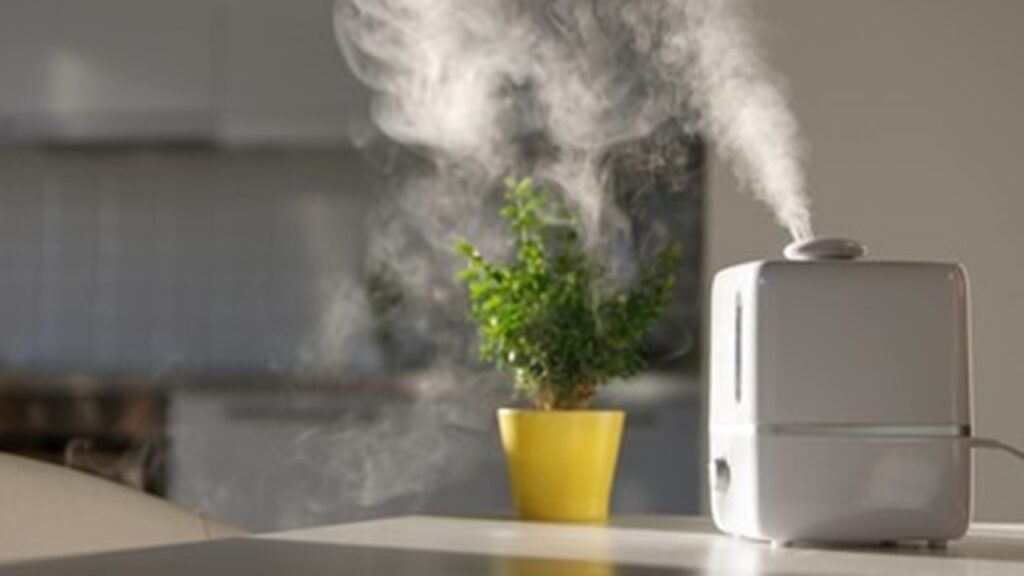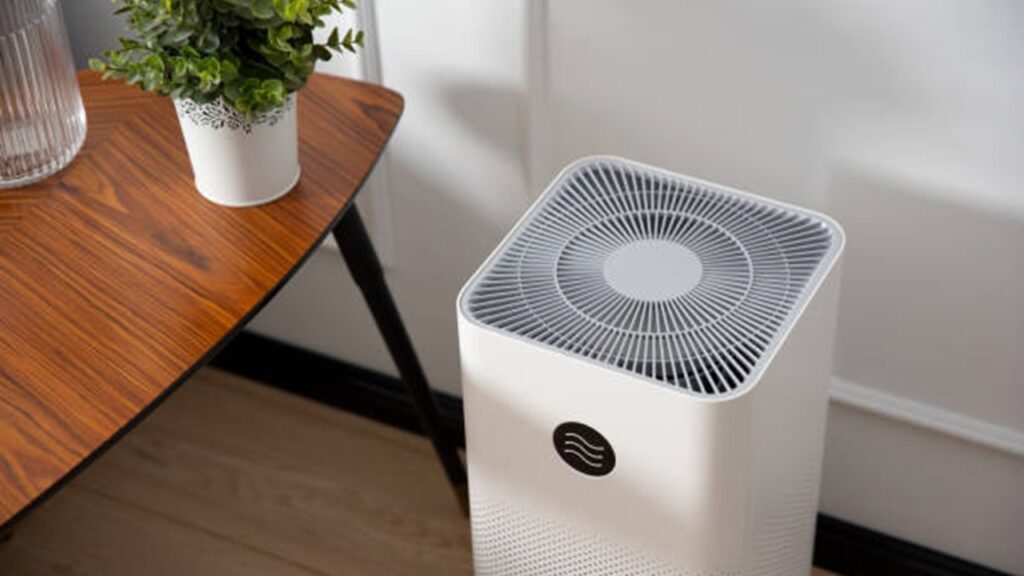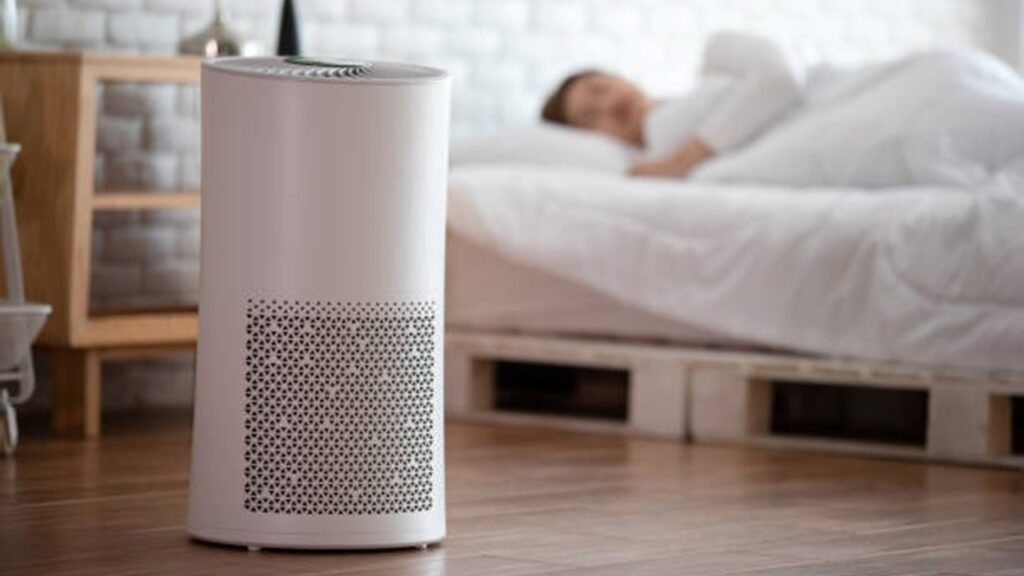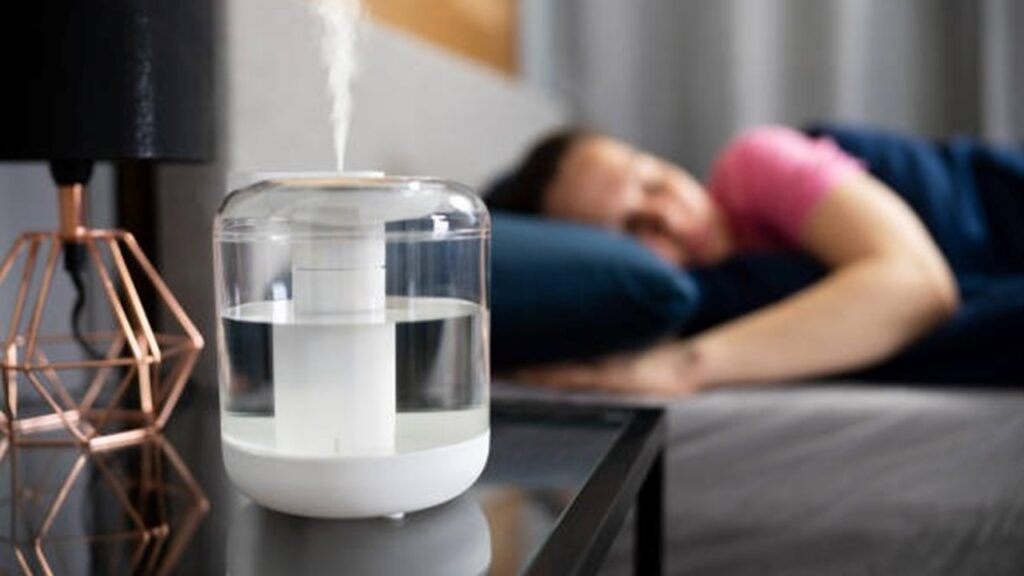
If you’re not sure which humidifier to buy, start by thinking about the size of your room, the type of mist you want (cool or warm), and how much upkeep you’re okay with.
A humidifier can make dry air more comfortable to breathe, especially during winter or in dry climates. But not all humidifiers are the same.
In this article, we’ll break down the different types of humidifiers, what they do, and how to choose one that fits your needs. Whether you’re shopping for a small bedroom or a whole house, this guide will help you figure it out.
Why a Humidifier Might Be Exactly What You Need
Dry air can cause a lot of little problems that add up. You might wake up with a dry throat or nose, deal with static shocks around the house, or even notice your wood furniture or floors starting to crack. That’s where a humidifier can help. It adds moisture back into the air, making your home feel better and healthier.
Here’s how a humidifier can help:
- Eases dry skin, lips, and throat
- Helps relieve cold and allergy symptoms
- Reduces static electricity
- Protects wood furniture and musical instruments
- Keeps houseplants from drying out
Different Types of Humidifiers Explained
Not all humidifiers work the same way. Some use heat, some use sound waves, and others use filters and fans. Let’s go over the most common types and what each one does best.
1. Cool Mist Humidifiers
Cool mist humidifiers release a room-temperature mist into the air. They’re a popular choice for homes with kids or pets because there’s no hot water involved.
These models are great for keeping rooms comfortable during warmer months or in places where heat isn’t needed.
There are two main kinds: evaporative and ultrasonic. Both are good at humidifying, but they work a little differently.
Cool mist humidifiers are energy-efficient, can cover larger areas, and often come with extra features like air filters or night lights. The trade-off is they may require more frequent cleaning and filter changes.
2. Warm Mist Humidifiers (Steam Vaporizers)
Warm mist models boil water and release it as steam. This can help kill germs and bacteria in the water before it becomes mist. They’re especially useful in winter when the extra warmth feels nice.
These are usually quieter because they don’t have fans, but they use more electricity and can get hot to the touch.
That’s why they’re not the best choice if you have small children or curious pets around. Some people also find the warm mist more soothing when they’re sick or congested.
3. Ultrasonic Humidifiers
Ultrasonic humidifiers use high-frequency sound vibrations to turn water into a fine mist. They don’t have a fan, which makes them nearly silent. This makes them perfect for bedrooms or nurseries.
They come in both warm and cool mist versions. One thing to keep in mind is that they can sometimes leave a white dust on surfaces if you have hard tap water.
Using distilled water can help prevent that. Many ultrasonic models are sleek, modern, and come with digital controls or smart features.
4. Evaporative Humidifiers
These are some of the most common and budget-friendly humidifiers. They use a fan to blow air through a wet wick or filter. The air picks up moisture as it moves through and releases it into the room as cool mist.
Evaporative humidifiers are self-regulating. That means they naturally stop producing mist if the room gets too humid.
They’re simple, effective, and good for everyday use, but the fan can make some noise, and the filters need regular replacing.
5. Hybrid Models and Air Washers
Hybrid humidifiers combine features from different types, often offering both warm and cool mist. Some also include air purification features. These are sometimes called air washers, as they clean the air while adding moisture.
They’re great for people with allergies or anyone wanting cleaner indoor air. These models tend to cost more and need more space, but they do more than a basic humidifier.
If you’re looking for an all-in-one solution, a hybrid might be worth considering.
Key Features to Look For in a Humidifier
When you’re comparing humidifiers, it’s easy to get lost in the details. But a few key features can make a big difference in how well it works, how easy it is to use, and how often you’ll need to clean or refill it.
Built-in Humidistat or Hygrometer
A built-in humidistat lets the humidifier automatically turn on or off based on the humidity level in the room. This keeps the air from getting too dry or too damp.
Some models show the exact humidity on a digital display, which makes it easier to monitor and adjust. If your humidifier doesn’t include this, you can buy a separate digital hygrometer to keep track.
Auto Shut-Off
This feature turns the humidifier off when the water tank is empty. It helps prevent the unit from overheating and adds peace of mind if you forget to turn it off before leaving home. It’s especially important for overnight use or if you plan to leave the unit running in a child’s room.
Run Time and Tank Capacity
The bigger the water tank, the longer the humidifier can run before needing a refill. A small tank might last 6–8 hours, while larger models can run for over 24 hours on a low setting.
Keep in mind, running on high or using warm mist will drain the tank faster. If you don’t want to refill the unit every day, look for one with a longer run time.
Noise Level
Some humidifiers are quiet, while others have a noticeable hum or fan sound. If you’re using one in a bedroom or nursery, look for a quiet or “sleep mode” setting.
Ultrasonic models are usually the quietest. That said, a bit of white noise can actually help some people sleep better.
Maintenance and Filter Requirements
All humidifiers need regular cleaning to prevent mold or bacteria buildup. Some are easier to clean than others, with wide tank openings or dishwasher-safe parts.
Evaporative models use wick filters that need to be replaced regularly. Before buying, check how often the filter needs changing and whether replacements are easy to find.
Humidifier vs Diffuser: Know the Difference
A humidifier adds moisture to the air, while a diffuser is mainly used to spread essential oils.
They may look similar, but their functions are quite different. Humidifiers are designed to increase the humidity level in a room, which can help with dry skin, irritated sinuses, and breathing comfort. Diffusers, on the other hand, are smaller and are mostly used for aromatherapy.
Diffusers usually have small tanks and don’t add much moisture to the air. They’re great if your main goal is to enjoy scents like lavender or eucalyptus. But if your home feels dry or you’re dealing with winter air or allergies, a humidifier is the better choice.
Some humidifiers come with a built-in aroma tray or essential oil compartment, giving you the best of both worlds. Just make sure your model is made to handle oils safely, as adding oils to the water tank can damage machines not designed for it.
Budget and Cost Considerations
Humidifiers come in a wide range of prices. You can find simple single-room models for around $30, while larger units with more features can go over $200. Whole-house humidifiers that connect to your HVAC system will cost even more, especially if you count installation.
When deciding what to spend, think about what features matter most to you. If you only need it for a small bedroom and don’t mind refilling it daily, a basic unit will do just fine.
If you want something for a larger space with a humidistat, auto shut-off, and long run time, it might be worth paying extra.
Also, don’t forget about long-term costs like filter replacements and how much electricity the unit uses. Ultrasonic and cool mist models usually cost less to run over time, while warm mist models use more power. A little research here can save you money later.
Tips to Use a Humidifier Safely and Effectively
Using a humidifier the right way can help you get all the benefits without creating new problems. Here are some simple tips to get the most out of your machine:
- Place it on a flat, raised surface like a table or shelf—not on the floor.
- Keep it a few feet away from walls, curtains, or furniture to avoid moisture buildup.
- Use distilled or filtered water to reduce white dust and mineral deposits.
- Clean the tank and base regularly, at least once a week.
- Empty and dry the tank daily if you’re not using it overnight.
- Don’t run the humidifier nonstop—use a humidistat or hygrometer to monitor levels.
- Keep humidity between 30% and 50% to avoid mold and mildew.
- Store your humidifier clean and dry when not in use for long periods.
Final Words
Choosing the right humidifier doesn’t have to be confusing. Just think about the size of your room, how much maintenance you’re okay with, and which features matter most to you, like quiet operation or automatic shut-off.
Whether you go for a warm mist, cool mist, or something in between, the right humidifier can make your home feel a whole lot more comfortable, especially in dry seasons.
Keep it clean, use it wisely, and your air (and skin) will thank you.
FAQs
Is it OK to sleep with a humidifier on all night?
Yes, it’s usually safe to sleep with a humidifier on all night, especially if it has auto shut-off and is kept clean. It can help you breathe easier and sleep more comfortably.
What humidity level is best for health and comfort?
The best humidity level for comfort and health is between 30% and 50%. Anything too low can cause dryness, while levels above 50% may lead to mold and dampness.
How often should I clean my humidifier?
You should clean your humidifier at least once a week. If you’re using it daily, a quick rinse and dry every day is also a good habit.
Can a humidifier make you sick if not cleaned properly?
Yes, if you don’t clean your humidifier often, bacteria and mold can grow in the tank. When that mist goes into the air, it can cause breathing issues or make allergies worse.
What’s the difference between ultrasonic and evaporative humidifiers?
Ultrasonic humidifiers use sound vibrations to make mist and are usually very quiet. Evaporative humidifiers use a fan and a wick filter, which makes them a little louder but helps avoid white dust buildup.

At our core, we’re a group of passionate clean air equipments and appliances enthusiasts. We dive deep into the world of fresh air around us. We try to provide as much value to the readers with our information and how to blog articles as possible along with proper information-based reviews as well.




